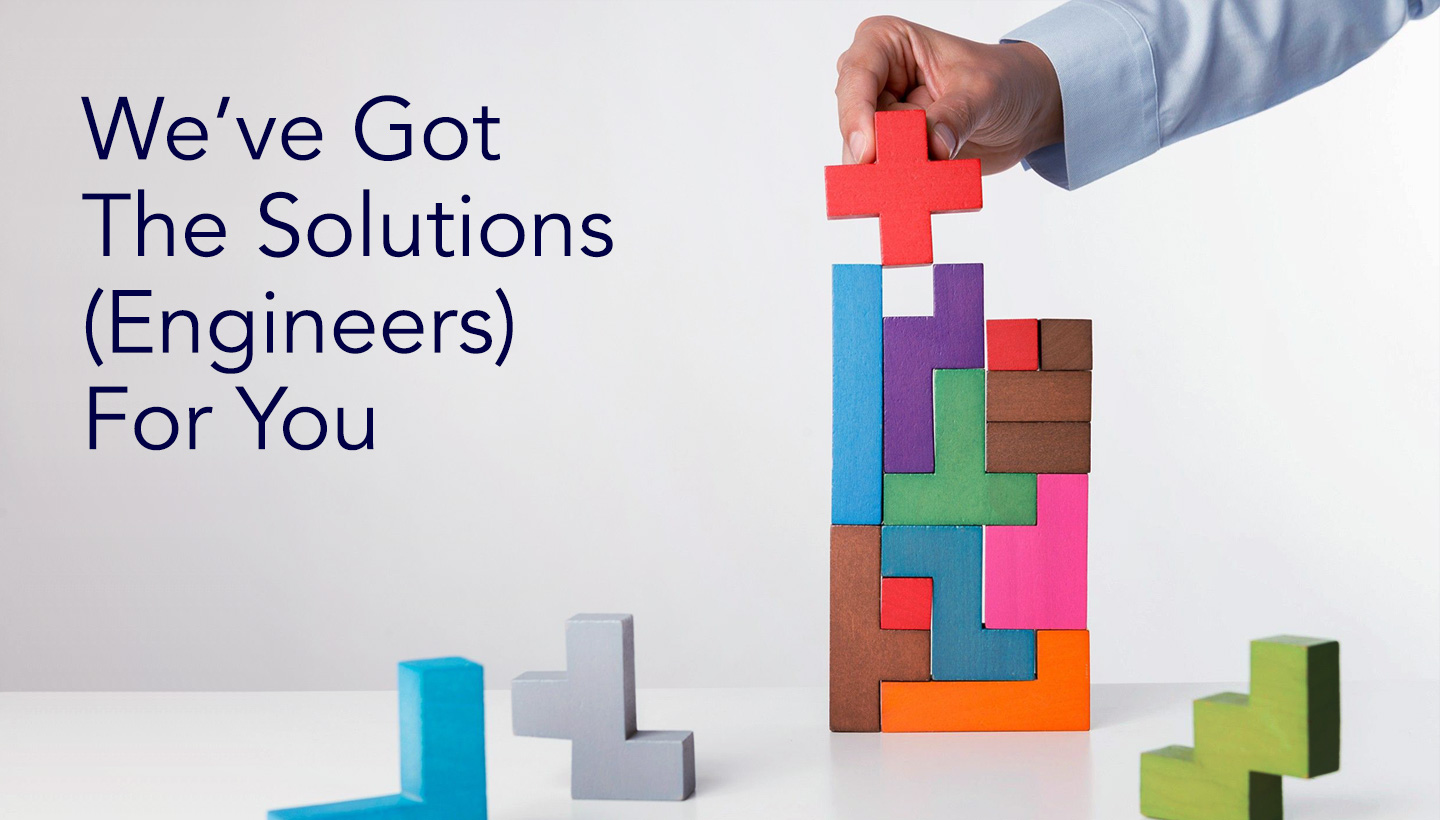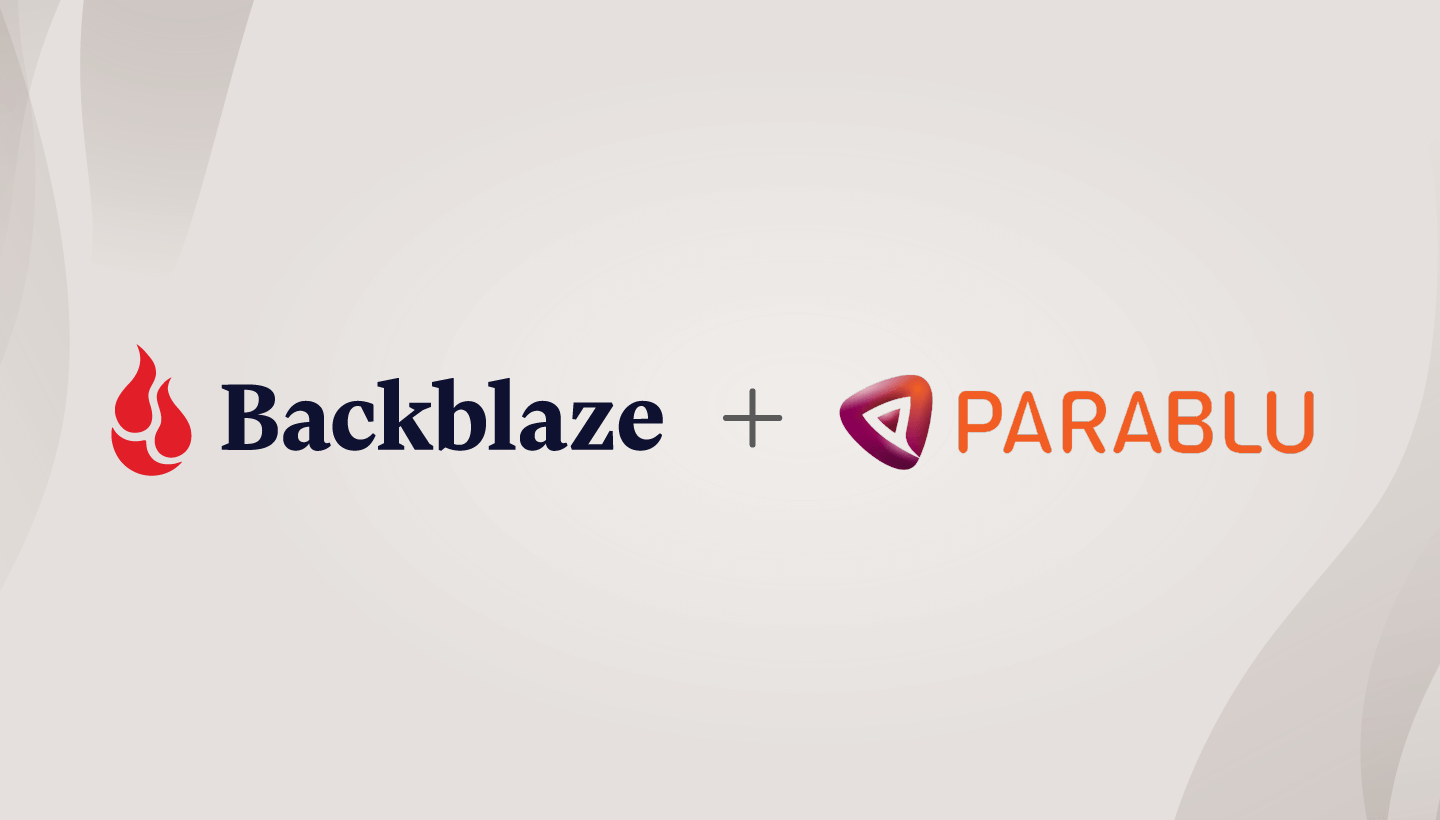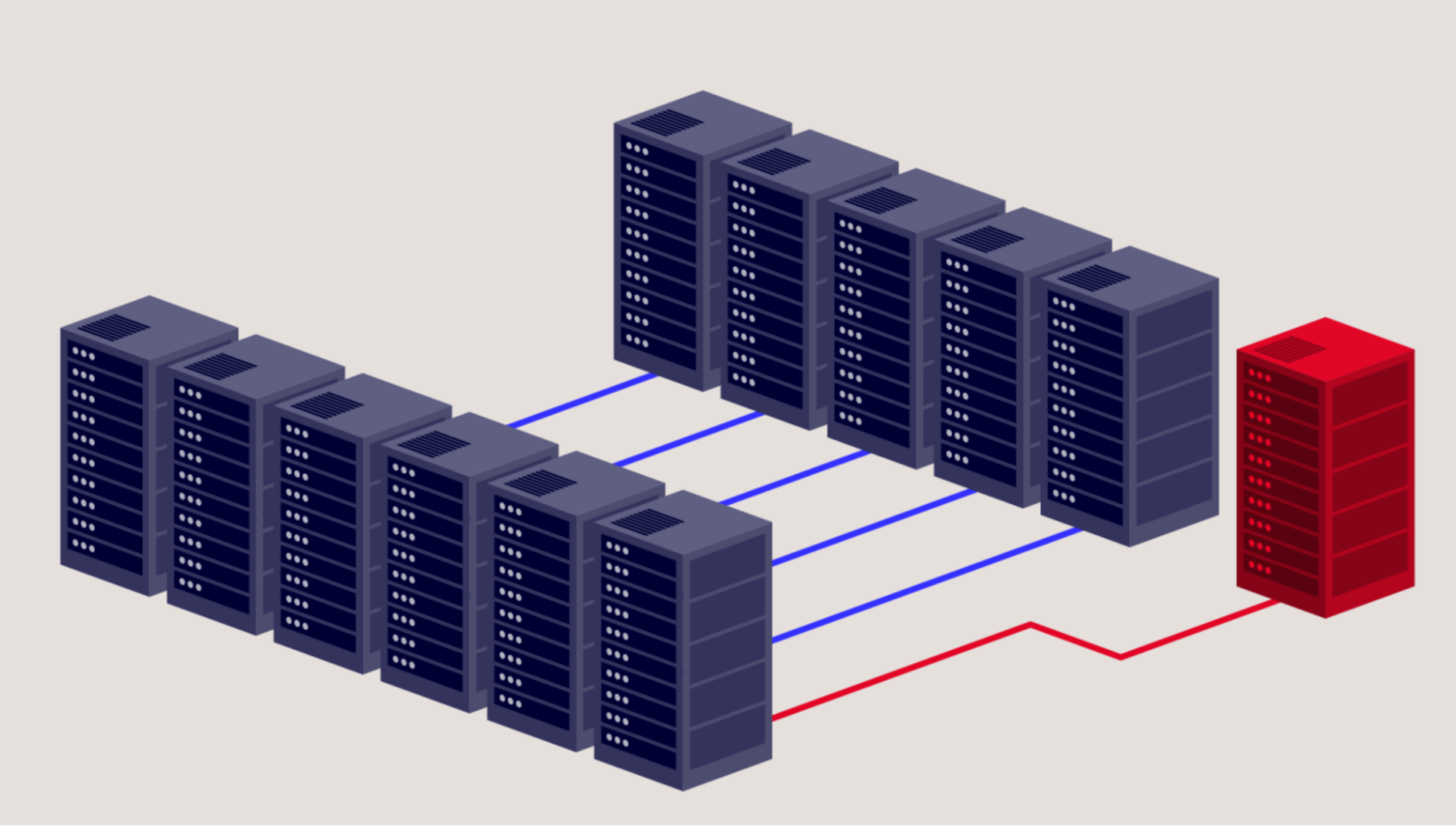
At Backblaze, we are fortunate to serve hundreds of thousands of customers in more than 150 countries. To make this possible, we have a Solutions Engineering team whose main goal is to help existing and potential customers succeed with the technical implementation of their cloud-based workflows. Keep reading to learn how this team of four forms the technical backbone of the Sales team, and how they can help you with challenges you might experience while enabling cloud solutions at your business.
What Makes Backblaze Solutions Engineers Different
In a traditional sales environment, there is a pre- and post-sales engineer. (Want to know more about the difference between sales and solutions engineers? More on that later.) The pre-sales engineer addresses technical questions that a customer may have prior to purchasing the product, while a post-sales engineer assists them with setting up the software and its integrations.
The first thing that sets our solutions engineers apart is that our customers at Backblaze get to work with the same team of people on both sides of the transaction. Their journey starts with an introductory call with a business development representative (BDR), who tries to get a better understanding of the client’s needs and concerns. Once the BDR qualifies the customer, they transfer them to an account executive (AE), who manages the customer’s account.
AEs work closely with solutions engineers (SEs) and ask them to step in when clients have unique technical requests. SEs begin by asking the customer questions to understand the full scope of the problem and offer them the best solution. The types of queries range from topics like writing scripts to partner integrations (more on these subjects later).
But once the problem is solved, and the customer is up and running, they aren’t passed off to another team, as is often the case in other operations. The SEs remain in conversation with customers to ensure they continue to get what they need from our products.
Another thing that sets our SE team apart is that they do not have quotas—their primary goal is to help the customer find the best solution to their needs, not to optimize their potential value for Backblaze. Since solving problems is their sole objective, their titles changed from “sales engineer” to “solutions engineer” in 2018.
Our Solutions Engineering team is built differently because we have a unique approach to business. The SEs work to create long-term relationships with customers because they want to help them succeed throughout the future.
The Team
Our Solutions Engineering team is made up of a solutions engineer manager and three solutions engineers. While all four of them come from diverse backgrounds, they are all well-versed in every aspect related to being an SE (such as writing to our API, testing integrations, and providing workflow recommendations to users), so each of them can step into another person’s role at any given time if needed.
Troy Liljedahl, Solutions Engineer Manager, started his career at Backblaze as a support technician. He transitioned over to the Solutions Engineering team because he wanted to pursue his passion for helping people, but in a more technical manner. He explained, “The solutions engineer job is the best of both worlds—not only am I getting to help customers succeed, but I am also able to do that by being a technical resource for them.”
Troy trains and manages the three other solutions engineers. Udara Gunawardena, one of the SEs, worked in a technical role at an Apple store during his college days. After graduating and becoming a full stack engineer, he realized that he missed interacting with users. He discovered solutions engineering and quickly made a career switch. Now, his programming background helps him with a number of tasks such as assisting customers who are trying to write to our API.
Another one of our solutions engineers joined the team around the same time as Udara. She completed her master’s in engineering management and worked in sales at a SaaS company. Now, her sales expertise helps her communicate with customers, solve their technical issues, and build strong relationships with them.
Rounding out the team is Mike Farace, who unlike his peers, works with us remotely, stationed all the way over in Ukraine. Although he may be physically distant, his relationship with Backblaze is one of the oldest. He worked with the founders of Backblaze between 2003 to 2006 while working as an IT architect at MailFrontier. He was the first contractor for Backblaze and set up the VPN so that the five founders could remotely access the testing servers that they were using in Brian Wilson’s apartment. Throughout the years, he was involved in some Backblaze projects and when there was the right fit for him, he moved into a full-time role as a solutions engineer.
Finding the Best Solutions for You
Broadly speaking, solutions engineers are responsible for understanding how our product works on its own and in integrations with other products, making recommendations based on that knowledge, and helping customers implement personalized workflows. Because Backblaze B2 Cloud Storage works with hundreds of different integrations, our SEs have extensive problem solving capacity. For example, they helped AK Productions use Flexify.IO to transfer their data from Google Cloud to Backblaze B2.
The SEs also have a wide understanding of the best solutions that work for different industries—the right solution for a media and entertainment customer may be different than the best one for an IT professional.
When teams begin working with new customers, they work to educate them on the different tools that are available. If a customer has a particular integration in mind, SEs can tell them about the benefits/disadvantages of using one integration over another and help them find the solution that matches their needs. Some topics that SEs often address are lifecycle rule settings, encryption, and SSO. They also help customers think through potential issues that they may not have yet considered.
One of the more technical aspects of the SE role is helping customers write to our API. Udara explained that this is his favorite part of the job: “The really creative stuff happens when people are trying to write to our API. Some people might be trying to stream video from surveillance cameras dynamically to Backblaze B2 whereas another company will have game streamers trying to save their video captures onto our cloud storage product. There’s a gamut of ways in which people use Backblaze B2 and that makes it really exciting.”
SEs also make sure they understand the full scope of a customer’s needs. They ask questions, even if they think they know the answer. Troy explained, “Although there will be patterns between customers, we truly look at every customer as unique and every setup as unique.” The team also does a great job of speaking the language of the customers—while some clients may have a technical background, others may not. Regardless of the customer’s technical expertise, SEs can give them a high-level overview of the solution without making them feel overwhelmed.
Another important aspect of the SE’s role is their ability to work cross-functionally with the other teams at Backblaze. Apart from the Sales team, they work closely with the Engineering team, especially when helping major clients. Udara said, “We have to communicate and collaborate effectively with the Engineering team to increase performance and to solve the issues that our clients may have.”
On the other hand, when SEs are working with smaller customers, they collaborate with the Customer Support team. Udara further explained, “The Customer Support team has seen the entire gamut of use cases, especially for Backblaze Computer Backup. They’re a great resource to us because they have the answers to even the smallest issues.”
The SEs are equally passionate as they are proficient at doing their jobs. Mike particularly loves the problem solving aspect to the job because it feels like a puzzle. He explained, “When you have a puzzle, you have to figure out what it looks like now, what it’s supposed to look like, and how to get it there. On top of that, when helping users, you’re dealing with different constraints like the customer’s budget and technology. It’s always a different puzzle to solve, which makes the job exciting.”
Testing Partner Integrations
When SEs have free time between talking to customers, they act as quality assurance for the Sales team by testing integrations—both those that could potentially work with Backblaze B2 and those that are currently being used. While doing so, they simultaneously document every step and when the integration testing is complete, they work with Customer Support to write a knowledge base article. These articles are available online for customers as a help guide so that they can learn how to use Backblaze B2 with our integration partners.
Back in October 2019, one of our customers wanted to use Backblaze B2 with EditShare Flow, which is a media asset management (MAM) all-in-one workflow solution that allows video editors to collaborate in the cloud. One of our solutions engineers, who had just joined the team, took on the responsibility of testing the integration. This partnership could potentially allow creative professionals to edit their videos on EditShare Flow and store their content on Backblaze B2.
Since the SE was new to the team and still learning our products, she worked with her teammates to learn about the different terms involved such as “MAM” and “metadata.” Once she learned more about EditShare Flow and its intricacies, she was ready to start the integration testing. She got the metadata from a NAS device, then she pivoted and pushed the data from that NAS device to Backblaze B2. She also tested the upload speed and ensured that the interface was user-friendly.
While testing the integration, she noted each step for setting it up which would later help her when writing a knowledge base article about the integration. After the integration testing was complete, she sent the customer all the documentation he needed to use Backblaze B2 with EditShare Flow. The customer was happy and if he had any further questions, he could always reach out to the SE.
When a company applies to be featured as an integration partner on our website, Mike tests the integration to ensure that the product can be paired successfully with Backblaze B2. Sometimes, companies that are already on the website make changes to their software, so Mike tests those products as well. He and the rest of the team also proactively test current integrations to verify that they are working and to identify any areas of improvement.
Demo Environment
SEs have a demo environment to show prospective customers how different features within Backblaze Computer Backup can play out. Mike maintains this demo environment, which is set up with pre-created accounts and consists of a large VMware server with over 140 machines running. He creates different demos ranging from ones that show how to add a new computer to those showing how to restore files on behalf of a user. There are even some computers in the environment that are in an error state, so that customers can see what that might look like, as well.
How Can You Become a Solutions Engineer?
If becoming a solutions engineer sounds like your ideal career, Troy offered the following advice, “The biggest skill that I look for when hiring a solutions engineer is the ability to ask the right questions. We need to identify a customer’s problem in order to offer them the right solution. Another quality I look for is the ability to talk in the same language as a customer, whether that means giving someone a high-level technical overview of the product or simplifying concepts so that it’s easier for a customer to understand.”
Troy continued, saying that although candidates need not be programmers, they should feel comfortable reading code and potentially writing scripts. However, this varies between different companies. At Backblaze, the role of an SE strikes a balance between being technical and customer service-oriented, but at other companies, the role may be more technical or more customer support-focused.
Reach Out!
If you are interested in learning more about how you could use Backblaze for your organization, click here to contact Sales and begin your journey with Backblaze! We look forward to hearing from you.


